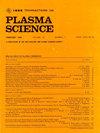高速流动条件下提高点火能量的等离子体阻力控制
IF 1.5
4区 物理与天体物理
Q3 PHYSICS, FLUIDS & PLASMAS
引用次数: 0
摘要
现代火花点火系统为提高发动机效率和减少废气排放,往往采用密度增大、流量增大的低燃料混合气。更有效的点火源,例如,适当调制的按需提升能量的电流剖面,有助于火焰核的形成过程和发展。强烈的空气运动将等离子体通道吹离火花间隙,导致等离子体通道拉伸,当拉伸过度时导致再击事件。本文研究了不同流速和背景密度下火花等离子体拉伸对放电过程的影响。结果表明,放电电极间的交叉流动可以通过等离子体拉伸提高放电能量的沉积效率,但长时间的拉伸会影响等离子体的稳定性。研究了等离子体电阻和放电电压对重击和吹断事件的影响机制。此外,采用升压电流策略研究了放电电流调制(50 mA-3 a)对流动条件下等离子体电阻控制的有效性。本研究全面考察了放电电流、流速和背景压力对等离子体拉伸和能量释放效率的影响。本文章由计算机程序翻译,如有差异,请以英文原文为准。
Plasma Resistance Control for Ignition Energy Improvements Under High-Speed Flow Conditions
Modern spark ignition (SI) systems tend to face a fuel-lean mixture of elevated density and intensified flow for improving engine efficiency and exhaust emission. A more effective ignition source, e.g., a properly modulated current profile of on-demand elevated energy is preferred to assist the flame kernel formation process and developments. The strong air motion blows the plasma channel away from the spark gap, causing the plasma channel to stretch, which leads to restrike events when stretched excessively. In this work, the impact of spark plasma stretching on the discharge processes has been investigated under various flow velocities and background densities. It is observed that the cross-flow may raise the deposition efficiency of discharge energy between the spark electrodes via plasma stretching, but the prolonged stretching may challenge the plasma stability. The mechanisms of restrike and blow-off events are investigated corresponding to plasma resistance and discharge voltage. Furthermore, a boosted current strategy is applied to study the effectiveness of discharge current modulation (50 mA–3 A) on the plasma resistance control under the flow conditions. The study comprehensively investigates the impacts of discharge current, flow velocity, and background pressure on plasma stretching and energy release efficacy.
求助全文
通过发布文献求助,成功后即可免费获取论文全文。
去求助
来源期刊

IEEE Transactions on Plasma Science
物理-物理:流体与等离子体
CiteScore
3.00
自引率
20.00%
发文量
538
审稿时长
3.8 months
期刊介绍:
The scope covers all aspects of the theory and application of plasma science. It includes the following areas: magnetohydrodynamics; thermionics and plasma diodes; basic plasma phenomena; gaseous electronics; microwave/plasma interaction; electron, ion, and plasma sources; space plasmas; intense electron and ion beams; laser-plasma interactions; plasma diagnostics; plasma chemistry and processing; solid-state plasmas; plasma heating; plasma for controlled fusion research; high energy density plasmas; industrial/commercial applications of plasma physics; plasma waves and instabilities; and high power microwave and submillimeter wave generation.
 求助内容:
求助内容: 应助结果提醒方式:
应助结果提醒方式:


